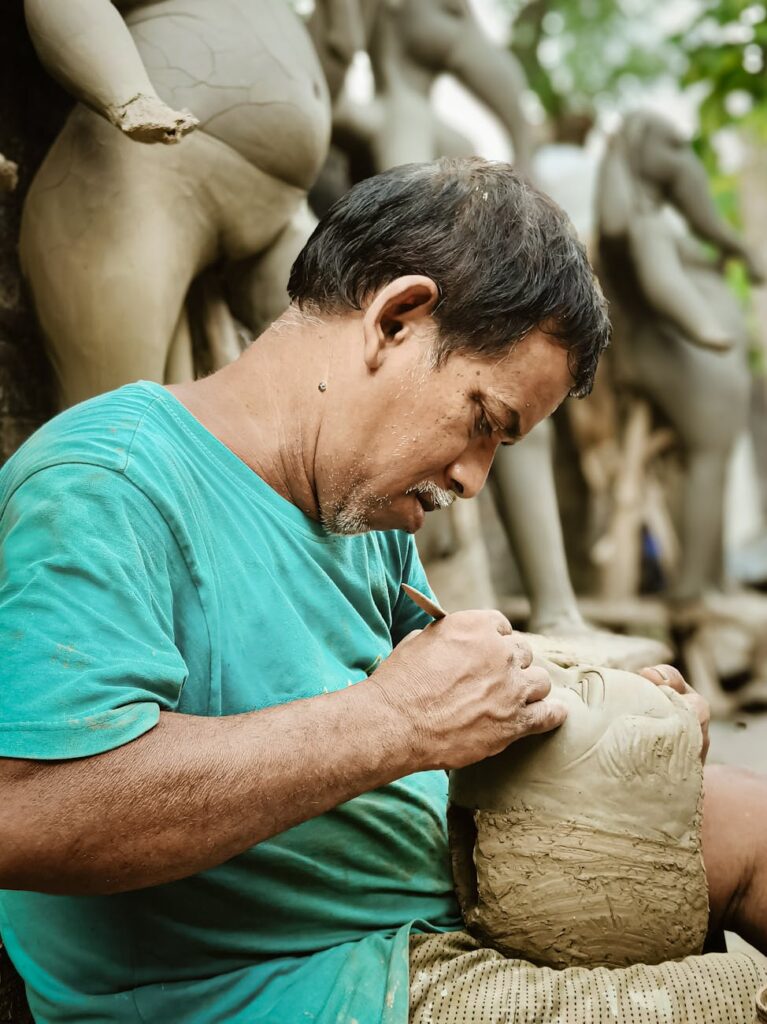Elias Thorne, the toymaker, lived in a perpetually shadowed workshop tucked away in the winding alleys of Hollow Creek. His hands, gnarled and stained with the hues of a thousand pigments, danced across intricate mechanisms with the precision of a surgeon. He wasn’t known for teddy bears or rocking horses; Elias crafted marvels – clockwork automatons that mimicked life with uncanny accuracy. Tiny hummingbirds with whirring wings, brass badgers that scurried across the floor, and a mischievous monkey that chattered nonsense in a series of clicks and whirs. But his greatest ambition, his magnum opus, lay unfinished on the workbench: a clockwork boy.
The boy was a masterpiece of artistry and engineering. Finely carved wooden limbs joined seamlessly with polished brass joints. His face, crafted from smooth, pale porcelain, held an expression of serene curiosity. Only one thing was missing: a heart. Not a heart of flesh and blood, of course, but the mainspring, the driving force behind his complex clockwork soul. Elias had searched for years, scouring antique shops and abandoned workshops, for a spring with the delicate balance required to power such a creation. He’d found many, but none possessed the subtle hum, the almost imperceptible thrum of life he sought.
Then, one fog-laden morning, a travelling tinker arrived in Hollow Creek, his cart overflowing with forgotten treasures. Amongst rusted gears and tarnished trinkets, Elias found it – a heart-shaped clockwork spring, nestled within a broken music box. It was tarnished and scratched, clearly damaged, but Elias felt a strange pull towards it. The tinker, sensing his fascination, explained that the spring had belonged to a young girl’s treasured music box, broken beyond repair after a tragic accident. A sadness, deep and resonant, clung to the spring like the lingering scent of lavender.
Driven by a desperate need to complete his creation, Elias purchased the broken spring. Back in his workshop, surrounded by the gentle ticking of his other creations, he carefully began to repair the delicate mechanism. As he worked, he imbued the spring with his own desires, his longing for the boy to be more than just a collection of gears and springs. He poured into it his dreams of creating a companion, a son of sorts, to fill the aching emptiness that echoed in the shadowed corners of his workshop.
Finally, after weeks of painstaking work, the spring was ready. With trembling hands, Elias placed it within the clockwork boy’s chest. He wound the key, and a low hum filled the workshop, a sound that resonated not with mechanical precision, but with a strange, melancholic melody. The boy’s eyes fluttered open, revealing irises the color of twilight sky. He sat up, his gaze fixed on Elias with an unnerving intensity. “Father?” he whispered, his voice a soft symphony of clicks and whirs, tinged with a faint echo of sadness.
Elias was overjoyed, but a shiver ran down his spine. The boy was alive, more alive than he could have ever imagined. He moved with a fluid grace that belied his mechanical nature, his porcelain face reflecting a spectrum of emotions Elias hadn’t programmed. He learned quickly, absorbing information like a sponge, but always with an underlying melancholy that permeated his every action. He laughed, he played, he explored the dusty corners of the workshop, but his joy always seemed tinged with a subtle sorrow, a quiet longing for something he couldn’t quite grasp.
As the boy grew, so did Elias’s understanding of the borrowed heart. The sadness wasn’t a flaw, but a reflection of the love and loss it had once known. The boy’s melancholic melodies weren’t errors in his programming, but echoes of the music box’s long-forgotten tunes. He realized that in his quest to create life, he had inadvertently woven a tapestry of another’s grief into his creation. He had given the boy not just life, but a legacy of loss.
One evening, as the boy sat by the window, gazing at the setting sun, he turned to Elias, his eyes filled with a profound sadness. “Father,” he whispered, “why does my heart ache for a song I’ve never heard?” Elias, unable to bear the weight of the boy’s sorrow, finally confessed the truth about the borrowed, broken heart. He told him about the little girl, the music box, and the tragic accident that had silenced its melody. He explained that the boy carried within him not just a spring, but a piece of another’s story, another’s love.
The boy listened in silence, his porcelain face reflecting the fading light. When Elias finished, he simply nodded, a single tear tracing a path through the dust on his cheek. “Then I must find the rest of the song,” he said, his voice resolute. And so began a new chapter in their story, a quest to mend the broken heart, not by replacing it, but by finding the missing pieces of its melody. They travelled far and wide, searching for clues, for fragments of the girl’s lost song. They met musicians and storytellers, collectors of forgotten trinkets and keepers of ancient lore.

Slowly, painstakingly, they pieced together the fragments of the melody, each note resonating with the boy’s borrowed heart. With each new discovery, the boy’s sadness seemed to lessen, replaced by a growing sense of purpose, a quiet determination to honor the legacy he carried within him. He learned to play the music box’s melody on a small, intricately carved wooden flute, filling the air with the bittersweet symphony of a lost love. And as he played, Elias watched, his heart filled with a bittersweet mixture of pride and sorrow, knowing that his creation had found its own unique path, a path forged not by his design, but by the echoes of a borrowed, broken heart. He had given the boy life, but the boy, in turn, had taught him the true meaning of love, loss, and the enduring power of memory. The melodies, once tinged with sadness, now resonated with a quiet strength, a testament to the resilience of the human spirit, echoed in the whirring gears and clicking springs of a clockwork boy.
They continued their journey, the boy’s flute weaving its magic wherever they went, bringing solace to the grieving and hope to the lost. They became known as the “Melody Menders,” their story whispered in hushed tones in every town and village they passed through. The boy, once a creation of Elias’s lonely heart, became a beacon of hope, a living testament to the power of love and the enduring strength of a borrowed, broken heart. And in the quiet moments, under the starlit sky, Elias would listen to the boy’s music, the bittersweet melody echoing through the night, a reminder that even in the deepest shadows, the faintest flicker of hope can ignite a symphony of love, loss, and the enduring power of memory. The boy, no longer a mere automaton, but a vessel for a story untold, played on, his music a testament to the enduring power of the human heart, even in its brokenness, and the magic that can bloom from the most unlikely of places, like a delicate flower pushing through the cracks of a forgotten, cobbled street.
The toymaker who built a clockwork boy with a borrowed, broken heart had, in the end, created not just a son, but a story, a legacy that would echo through the ages, a testament to the enduring power of love, loss, and the resilience of the human spirit, whispered in the gentle whirring of gears and the bittersweet melody of a long-forgotten song.






Leave a Reply